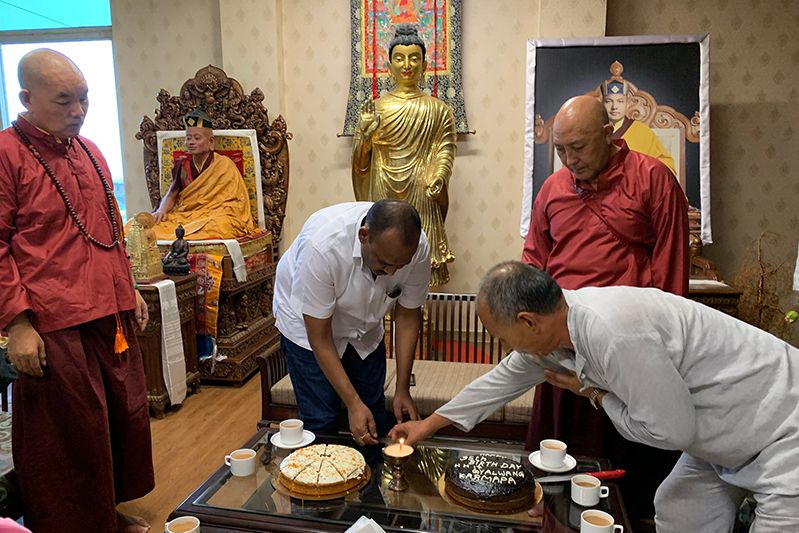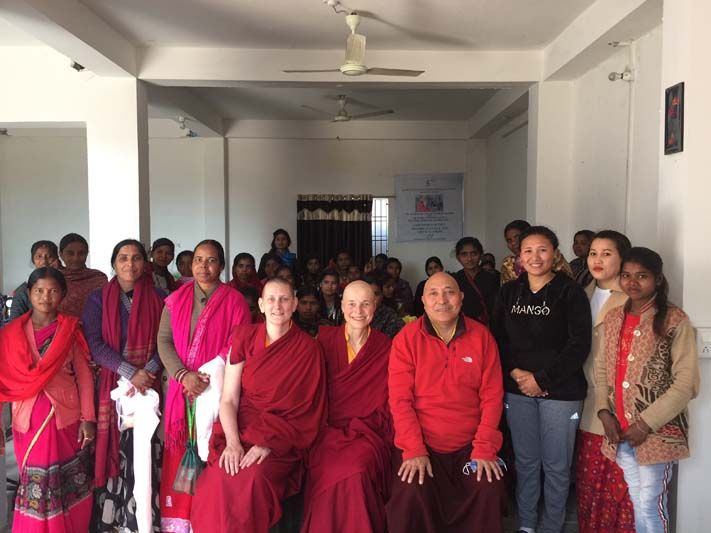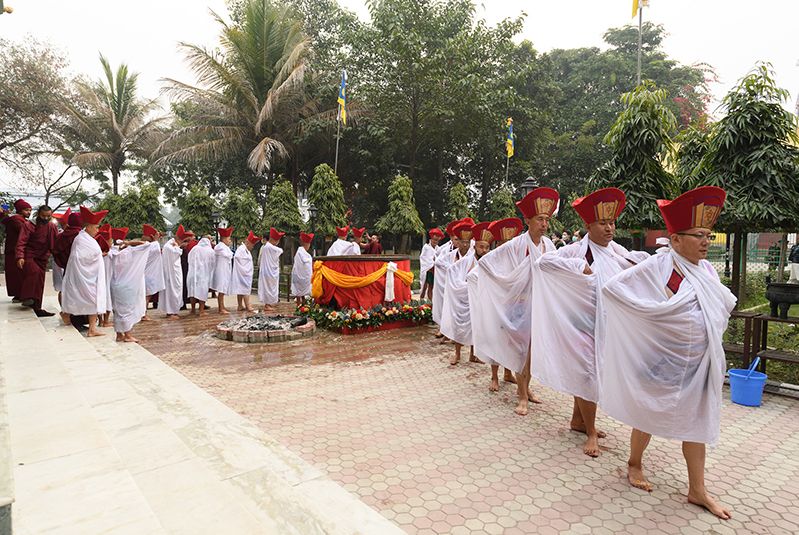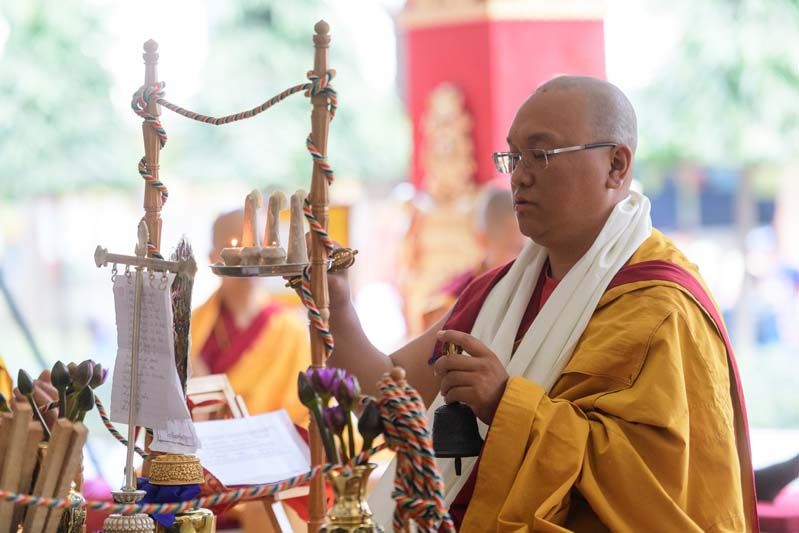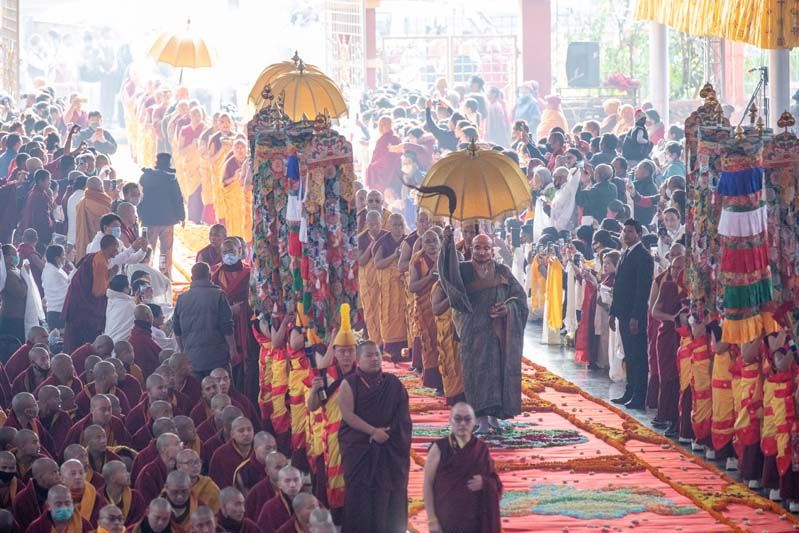Gyalwang Karmapa’s Advice on Dress Codes for Sangha
- December 24, 2007
December 24, 2007, Translated by Ringu Tulku Rinpoche & Karma Choephel
I also have something to say about clothing, bearing, and demeanor. I thought about saying something last year, but it’s not easy to talk about this. But this year, if I embolden myself and say something about it, it will probably be OK. I said something about this in either 2003 or 2001. In the Buddhist tradition, there are two types of practitioners: monastics and householders. The monastics are monks and nuns, and the householders have households, and they have different garb and different demeanors. Otherwise, if the monastics get confused with the householders, or the householders get mixed up with the monastics, it will become very difficult for other people develop faith. It will be difficult to identify who is what. We won’t be able to identify whether someone is a monastic or a tantric practitioner. We won’t be able to tell people apart.
Even among our rinpoches, there are householders. I’m not at all saying that this is not good. Really. For example, Marpa and Milarepa, for whom we have the greatest devotion, were also householders. They did not wear the three Dharma robes. That’s how it is. This is not a question of more or less important. Even if you are a householder, you can have qualities of purity and realization that are superior to a monastic’s, and a monastic can have qualities of purity and realization that are superior to a householder’s. This is not a question of more or less important, but householders should wear the clothing of householders, and monastics should wear the clothing of monks and nuns. Otherwise, it will get all mixed up.
Those of us who know and understand might think this is OK as it is, but those who don’t know probably think that everyone who wears red robes is the same. If they see one person wearing red robes and the Dharma robe acting like a householder with a spouse and children, they will probably think that everyone who wears the robes is like that. They’ll think that everyone who wears red is the same. For that reason, you should really think about this. Think about what you should do. I don’t have any specific suggestions here. We should all cherish the Dharma and figure out what is the best way to act on this. I ask you all to consider this and then take some appropriate actions.
I’ve talked about three topics. First, I discussed giving up meat; second, the environment; and third, clothing. Up to now I’ve primarily been focusing on the monastic sangha’s clothing and demeanor during the Kagyu Monlam. If I can do something about the motivation and demeanor of the householders—when I have the opportunity or it is the right time—I will do it. But right now I am asking you to think this over and do what you think is best. I don’t have anything else to say. If I say too much, it will get too dark.
Many respectable lamas and tulkus of the Karma Kamtsang lineage have come here, with Jamgon Rinpoche and Gyaltsap Rinpoche foremost, as well as Kyabje Garwang Rinpoche from the Surmang Kagyu branch of the Karma Kagyu, and also lamas and tulkus from the Drikung and Drukpa Kagyu. I would like to thank you all for “turning your steeds in this direction,” as it’s said. These days we don’t ride horses, so I thank you for turning your steering wheels in this direction. Many members of the sangha have also come here. Some of the things I have said have been pleasant; some have been harsh. For whatever wrong I have done to the Sangha, “I admit this. I confess this. I do not conceal this. Henceforth I shall not do this again.” Because of the positive power of our pure motivations, may we be able to turn the world in the direction of peace and happiness, and in particular, since we currently are staying here in the Noble Land of India, may this country of India have the good fortune of a happy country, happy people, and prosperity. In particular, in Tibet, the Land of Snow, which has been a great source of the Buddhist teachings, the root of the teachings of sutra and tantra, may the sun of peace and happiness dawn soon. May His Holiness the Dalai Lama and the great teachers of all traditions soon be able to set foot upon the soil of Tibet. The people of Tibet wait for them just as the cuckoo waits for the rain. I dedicate this so that all their wishes may be fulfilled, and ask you all to keep this in your minds and pray.
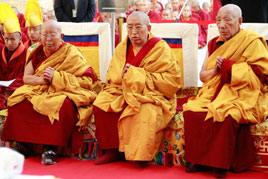
37th Kagyu Monlam Schedule
Tibetan / English / Chinese • French • German • Indonesian • Korean • Polish • Russian • Spanish • Vietnamese
Dharma Teachings
 Meditation Instructions
Meditation Instructions
Recorded during the 37th Kagyu Monlam, Bodhgaya, India. January 28-30, 2020.

